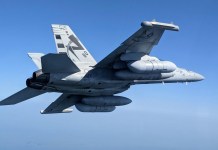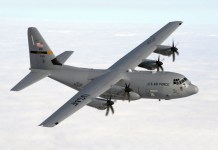Ever since the Russian, fifth-generation, stealth Su-57 was showcased first in 2010, which was under production since 2002, many defence experts questioned how complete was the stealth fighter’s design?
Earlier this year in March, Russian defence ministry had released a video on its social media which showed Su-57 stealth fighter firing an air-to-air missile from one of its wing-root weapons bay.
The Su-57’s wing root bays have been under scrutiny since their first public display. It has been questioned more often if these bays open at all in the absence of any imagery, video or information on their functioning.
The missile appears to be fired from the bay in the Russian Defence Ministry’s video but David Axe writing for the National Interest says it’s not totally clear that the missile actually fires from the bay, rather than from a temporary, fixed pylon.
The stealth fighter has four weapon bays – the two wing-root bays plus two larger belly bays – but the wing-root are too small to fit Russia’s standard R-74 dogfighting missile.
The missile in the video may be from short-range R-74/K-74-series. A report in The Aviationist says that Russia has been working on a new missile that could fit the Su-57’s side bays. Crucial to jet’s working, the wing bays probably require a complex mechanism to quickly eject a missile.
The reports in The National Interest suggests that F-22 features a trapeze that thrusts AIM-9 missiles from its wing-root bays and chances are that Russia may have mastered the trapeze mechanism used in US Air Force’s fighter jets.
World’s Most Powerful Naval Power – The US Navy Adds More Muscle To Its Arsenal; Goes Hypersonic
Speculating the integration of similar mechanism in the Russian aircraft, The Aviationist’s report says that “such method requires the stealth plane to fly with the open bay doors for a certain amount of time, a condition that can limit the aircraft performance, manoeuvrability, and increases the overall plane’s Radar Cross Section (RCS), with a temporary exposure of the aircraft to the enemy radars”.
“As we were looking at the static display Su-57 and watching the flight demos, a number of photographers remarked that no one had seen the weapons bay opened yet. That contrasted with US F-22 and F-35 demonstrations, where a pass with the weapons bay open had been a part of the demonstrations now for years.
The experts have also drawn similarities with China’s J-20. “As we were looking at the static display Su-57 and watching the flight demos, a number of photographers remarked that no one had seen the weapons bay opened yet. That contrasted with US F-22 and F-35 demonstrations, where a pass with the weapons bay open had been a part of the demonstrations now for years,” writes The Aviationist’s Tom Demerly.
India Goes Roaring Into Africa; Looks To Ink Defence & Other Key Pacts With Morocco
In the Chinese J-20, lateral weapon bays with a missile deployment device on the side weapons are used as it extracts the selected air-to-air missile and then closes the door.
Currently, the Russian Air Force has received the delivery of a little over a dozen Su-57s and has been conducting the trials for the same, exploring options to integrate new weapons and other systems on the aircraft. The Kremlin has placed an order for 76 more Su-57s while their capabilities as a stealth fighter jet remain under question as they haven’t been yet used in combat. They were deployed in Russia’s Syrian missions but were never involved on the front-line.
India has been scrutinizing procuring twin-engine Su-57 jets from Russia to evaluate their capabilities before entering into a contract for joint production. In July, a month after India’s defence minister Rajnath Singh’s visit to Moscow, India’s ministry of defence placed an order for 33 Russian fighter jets and upgrades to 59 others worth $2.4billion.
The ministry of defence had said: “The purchase of 21 MiG-29 and 12 Su-30 MKI, as well as upgrades to 59 existing MiG-29s, was to “augment” the Indian Air Force’s combat squadrons”




